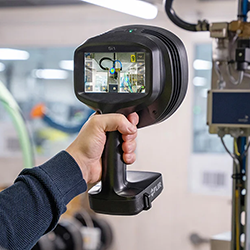3D Printing Is Already Starting To Threaten The Traditional Spare Parts Supply Chain
Designing for the digital world
3D Printing: Should You Go Open Source?
Race For 3D Printing Capacity Could Revive M&A
Campofrio Food Group Leads the Way in Digitization with Cisco Connected Factory Solution
Closing US Manufacturing Trade Deficit Would Create 1.3M Jobs, Says Tech Think Tank
Oerlikon expands additive manufacturing R&D and production capacity in the US
Stratasys launches new rapid prototyping Engineering-Grade 3D Printing Solution: The F123 Series
Why 2017 is the year integration enables Industry 4.0 growth
The 9 unit Winbo 3D printer is an all-in-one micro factory
The Road To IIoT: What Can We Learn From Other Industries?
One Of Europe's Top Business Schools Is Helping Executives Navigate Industry 4.0
Chiefs hold back on smart factories after backlash
Sharp Executive Says Plan for Foxconn LCD Plant in U.S. is Still 'On The Table'
The 3D Printers of CES
Records 751 to 765 of 863
First | Previous | Next | Last
Engineering - Featured Product

